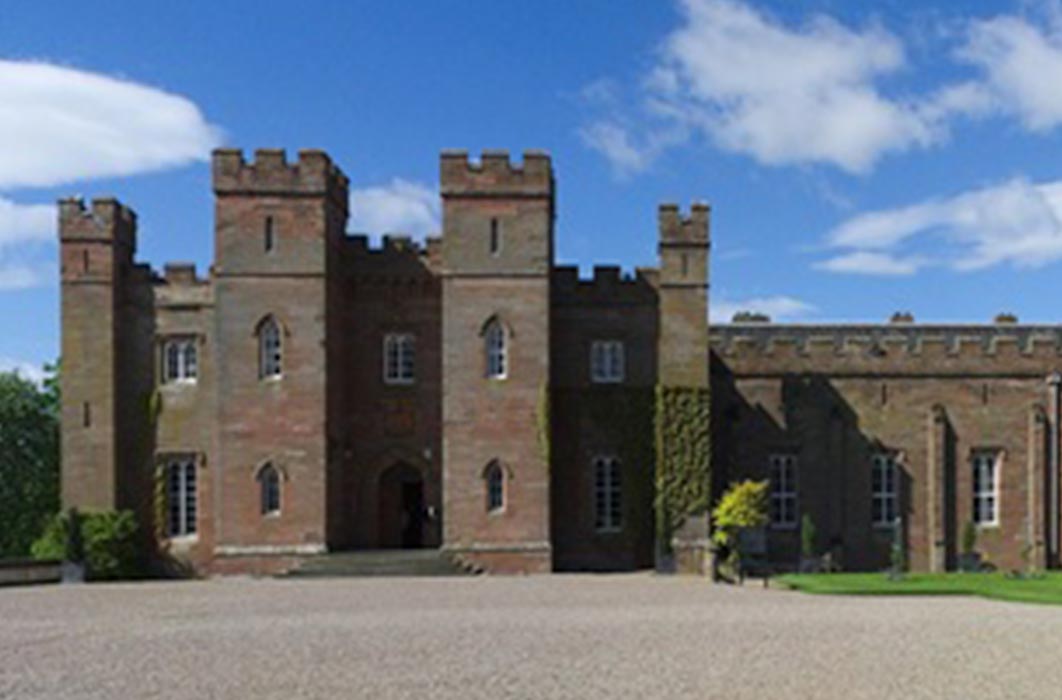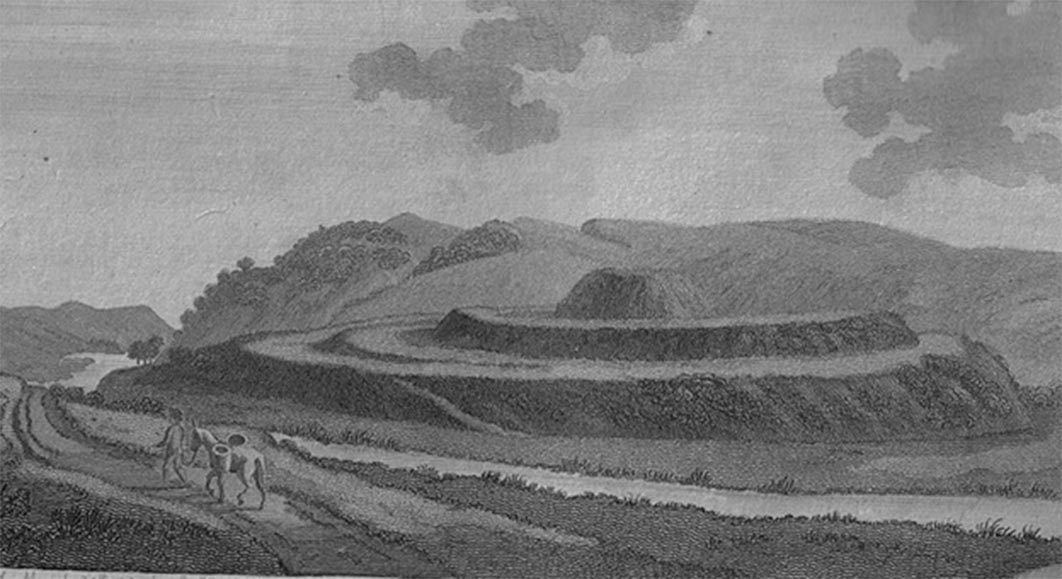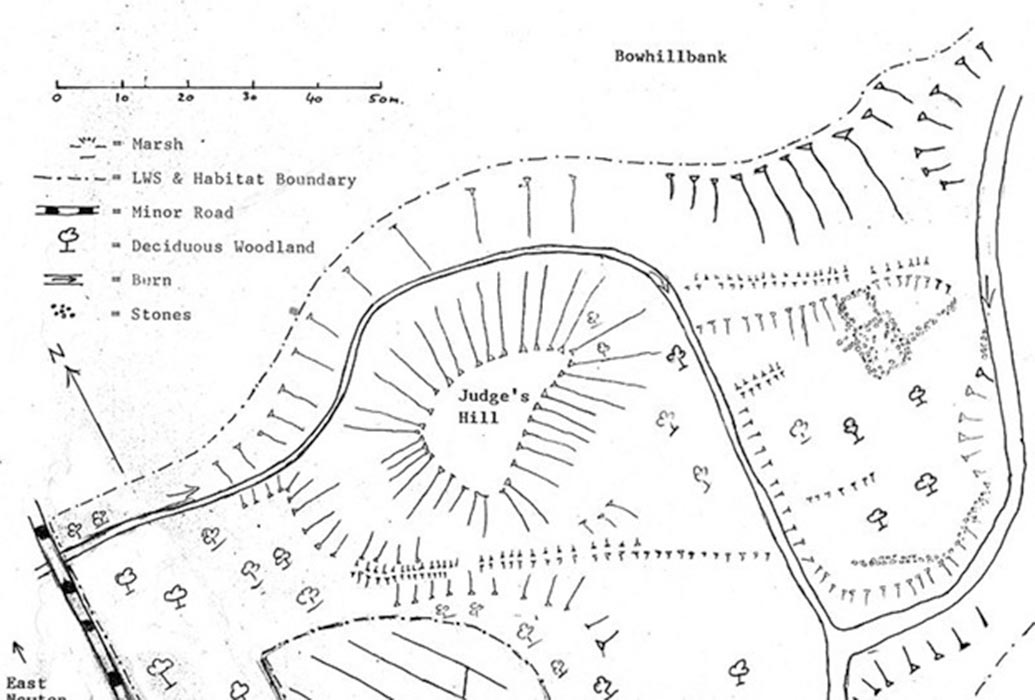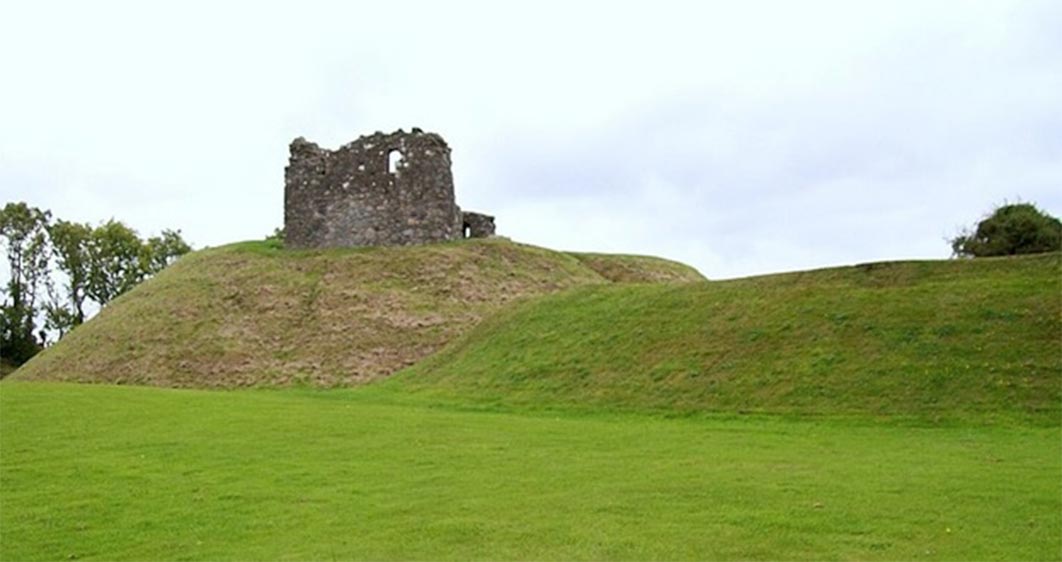
Sacred Moots: Scone of Scotland and Tara Hill of Ireland
While the Medieval Norse world was judicially controlled by circular open-air assemblies called Things, at mounds called thingstead or thingstow, early Medieval Britain was peppered with moot, mote, and mute hills. These natural hills, or artificially enhanced ancestral burial mounds, were historically used as community meeting places of assembly, just like a moot hall is a meeting or assembly building where local disputes and issues are settled, orators would read out public proclamations and law keepers managed judicial cases.

Motte of Urr in Dumfries & Galloway, Scotland, near Dalbeattie in ‘Francis Grose Antiquities of Scotland’ by Roger Griffith (1797) It was the great judicial center of the Kings of Galloway, covering the lands below the waters of the River Cree (Public Domain)
Etymology of Moot
The word moot or mote is of Old English origin from the verb ‘to meet’, and the term folkmoot refers to a specific local assembly with recognized legal rights. In Ireland and Scotland, the word moot appears in the Gaelic place name, Tom a' Mhòid, meaning the ‘Court Hill’, and many Scottish villages and towns feature Court Hills, Justice Hills and Judge’s Hills, which are often associated with names such as ‘law’, ‘knowe’, ‘knock’ and ‘Knockenlaw‘.

“A map of the Judge's Hill,” by Roger Griffith. Located in Galston, Ayrshire, Scotland (Public Domain)
Royal, Civil, Judicial and Agricultural Power Houses
Often surrounded by water, an environmental element which many archaeologists think had functional or religious significance, moot hills were more often than not built upon existing archaeological mounds (tumuli or mottes.) Motte is the French word for ‘mound’ and moot hills were sometimes built on the remains of motte-and-bailey castles, which were man-made mounds surrounded by ditches with an outer bailey, which according to writer, John Strawhorn, in his 1994 book, The History of Irvine were often reused as moot hills.

The motte (left) and bailey (right) of Clough Castle in Ireland. (CC BY-SA 2.0)
In northern Scotland, Cuthills, (also Couthil or Cuthil,) derive from the Gaelic term comhdhail, and these early Medieval assemblies were associated with lowland Scottish shires and Celtic thanages. According to Alexander Grant in his 2008 book, Franchises North of the Border: Baronies and Regalities in Medieval Scotland, Cuthills were non-seignoral burlaw courts and dealt with minor disputes.




